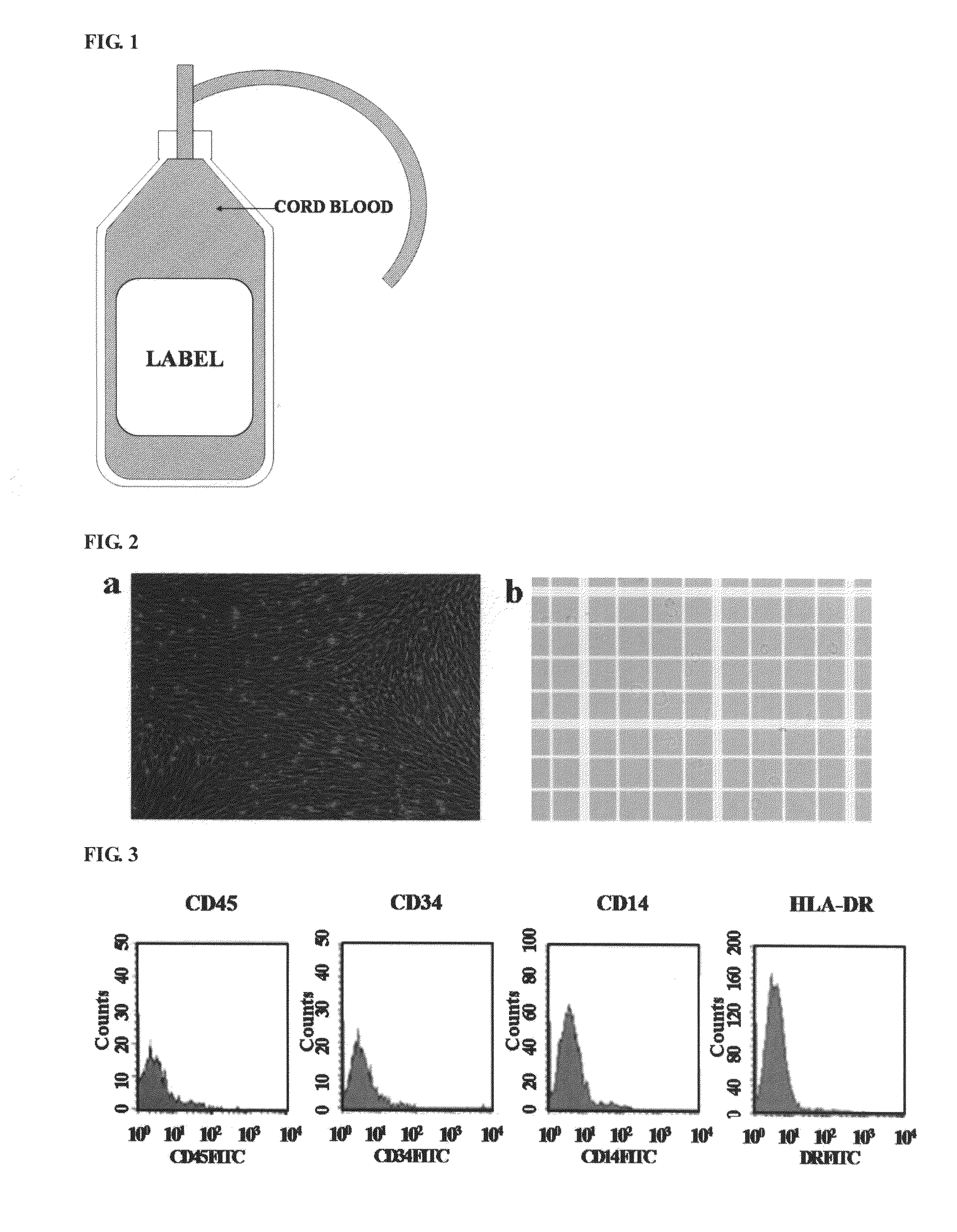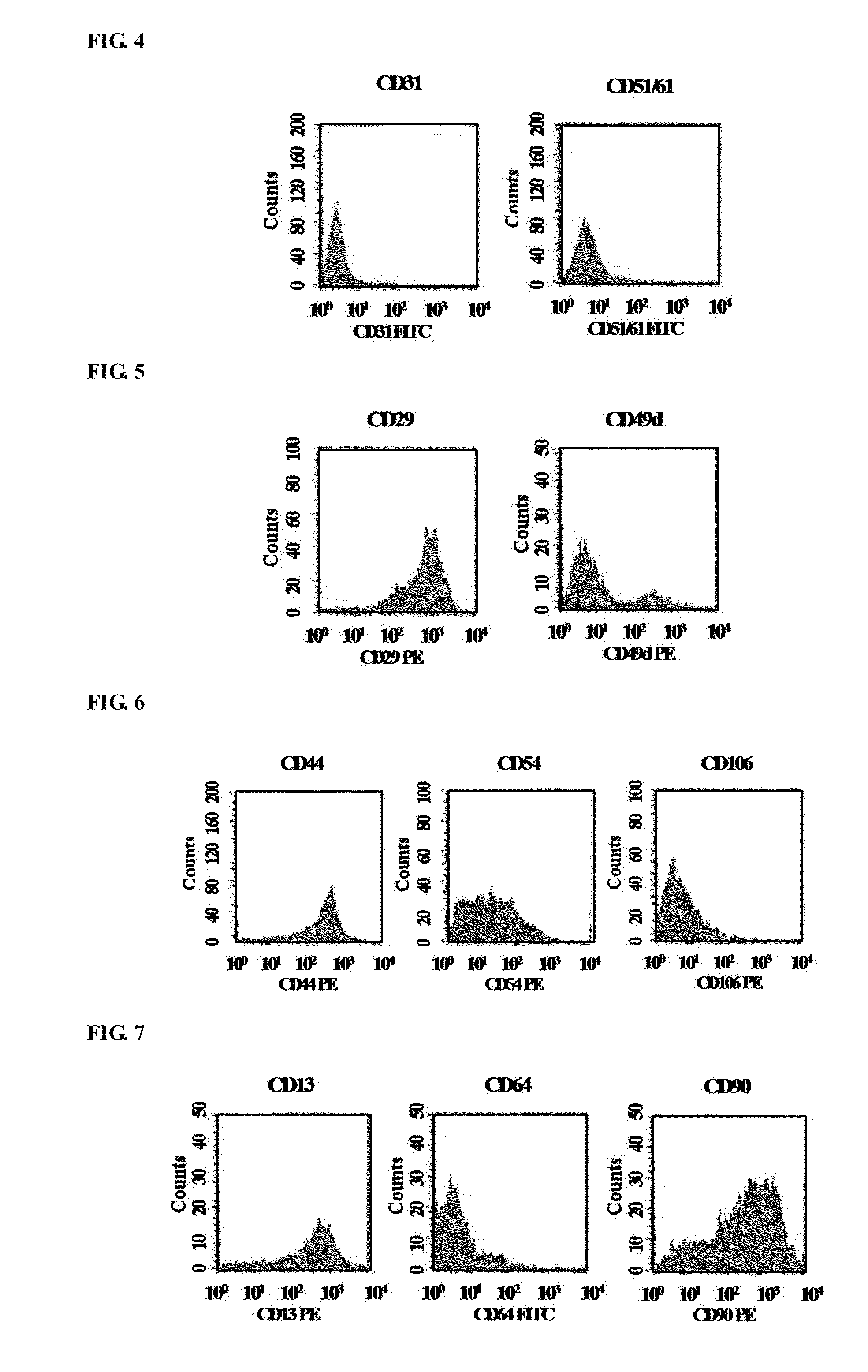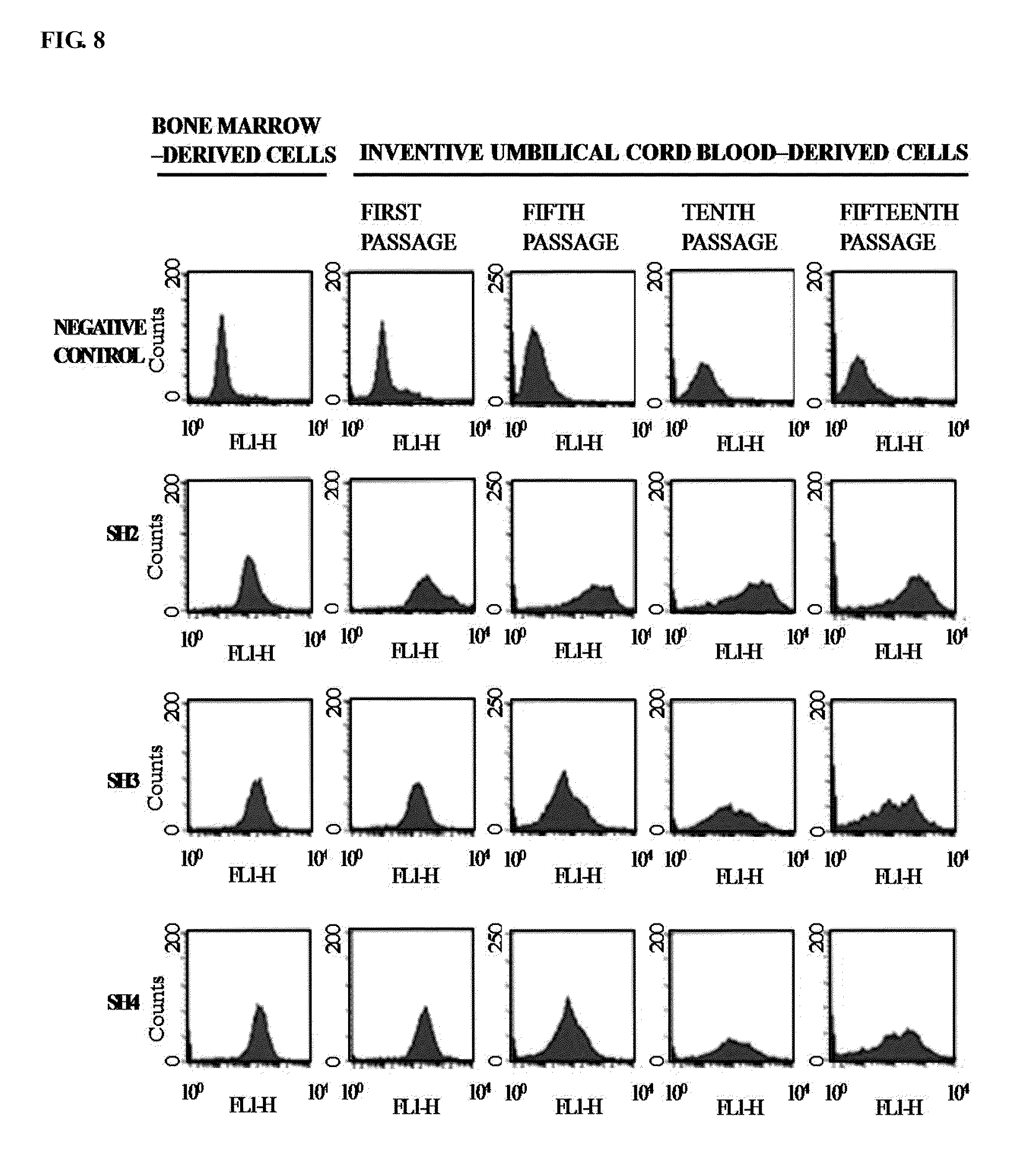Isolation and Culture-Expansion Methods of Mesenchymal Stem/Progenitor Cells From Umbilical Cord Blood, And Differentiation Method of Umbilical Cord Blood-Derived Meschymal Stem/Progenitor Cells Into Various Mesenchymal Tissues
a technology umbilical cord blood, which is applied in the field of mesenchymal stem/progenitor cells isolation and cultivation from umbilical cord blood, and the differentiation method of umbilical cord, which can solve the problems of difficult practical use, imposing a significant economic burden on long-term treatment, and causing significant pain to patients. patients, the effect of reducing the number of patients
- Summary
- Abstract
- Description
- Claims
- Application Information
AI Technical Summary
Benefits of technology
Problems solved by technology
Method used
Image
Examples
example 1
Isolation and Cultivation of Mesenchymal Stem / Progenitor Cells From Umbilical Cord Blood According to the Present Invention
[0065]1) Isolation and Ex Vivo Cultivation of Mesenchymal Stem / Progenitor Cells from Umbilical Cord Blood
[0066]Umbilical cord blood was collected from umbilical vein after childbirth. In collecting the umbilical cord blood, after the umbilical cord was sufficiently sterilized with alcohol and betadine, the umbilical vein was pricked with a 16G needle connected to an umbilical cord blood-collection bag containing 23 ml of a CDPA-1 anticoagulant such that the umbilical cord blood was collected into the collection bag by gravity (see, FIG. 1).
[0067]After 15 ml Ficoll-Hypaque (density: 1.077 g / ml) was placed in a 50 ml conical tube, 25 ml umbilical cord blood collected as described above was slowly overlaid onto Ficoll-Hypaque and centrifuged at 400×g for 40 minutes at room temperature to form a mononuclear cell layer. After removing the supernatant, the mononuclear...
example 2
Differentiation of Umbilical Cord Blood-Derived Mesenchymal Stem / Progenitor Cells of the Present Invention into Chondrocytes
[0092]1) Differentiation of Umbilical Cord Blood-Derived Mesenchymal Stem / Progenitor Cells of the Present Invention into Chondrocytes
[0093]In order to examine if the umbilical cord blood-derived mesenchymal stem / progenitor cells of the present invention have the characteristic of differentiating into mesenchymal tissues, the differentiation of these cells into chondrocytes was induced.
[0094]The medium used in differentiation into the chondrocytes had the composition given in Table 1 above, and the cells were differentiated in pellet cultures. The medium was replaced every three days, and cells were sampled at one-week intervals after differentiation induction, and subjected to immunomarker expression analysis and molecular biological analysis.
[0095]2) Immunochemical Analysis of the Chondrogenic Differentiated Tissues
[0096]After differentiation into the chondroc...
example 3
Differentiation of Umbilical Cord Blood-Derived Mesenchymal Stem / Progenitor Cells of the Present Invention into Osteoblasts
[0113]1) Differentiation of Umbilical Cord Blood-Derived Mesenchymal Stem / Progenitor Cells of the Present Invention into Osteoblasts
[0114]In order to examine if the mesenchymal stem / progenitor cells of the present invention have the characteristics of differentiating into the osteoblasts, the differentiation of the inventive cells into the osteoblasts was induced.
[0115]The medium used in differentiation into the osteoblasts had the composition given in Table 1 above, and the cells were differentiated in monolayer-culture. The medium was replaced every three days, and cells were sampled at one-week intervals after differentiation induction, and subjected to immunomarker expression analysis and molecular biological analysis.
[0116]2) Histochemical Analysis of Osteogenic Differentiated Tissues
[0117]After differentiation into the osteoblasts, the cells of the present...
PUM
| Property | Measurement | Unit |
|---|---|---|
| density | aaaaa | aaaaa |
| thickness | aaaaa | aaaaa |
| volume | aaaaa | aaaaa |
Abstract
Description
Claims
Application Information
 Login to View More
Login to View More - R&D
- Intellectual Property
- Life Sciences
- Materials
- Tech Scout
- Unparalleled Data Quality
- Higher Quality Content
- 60% Fewer Hallucinations
Browse by: Latest US Patents, China's latest patents, Technical Efficacy Thesaurus, Application Domain, Technology Topic, Popular Technical Reports.
© 2025 PatSnap. All rights reserved.Legal|Privacy policy|Modern Slavery Act Transparency Statement|Sitemap|About US| Contact US: help@patsnap.com



